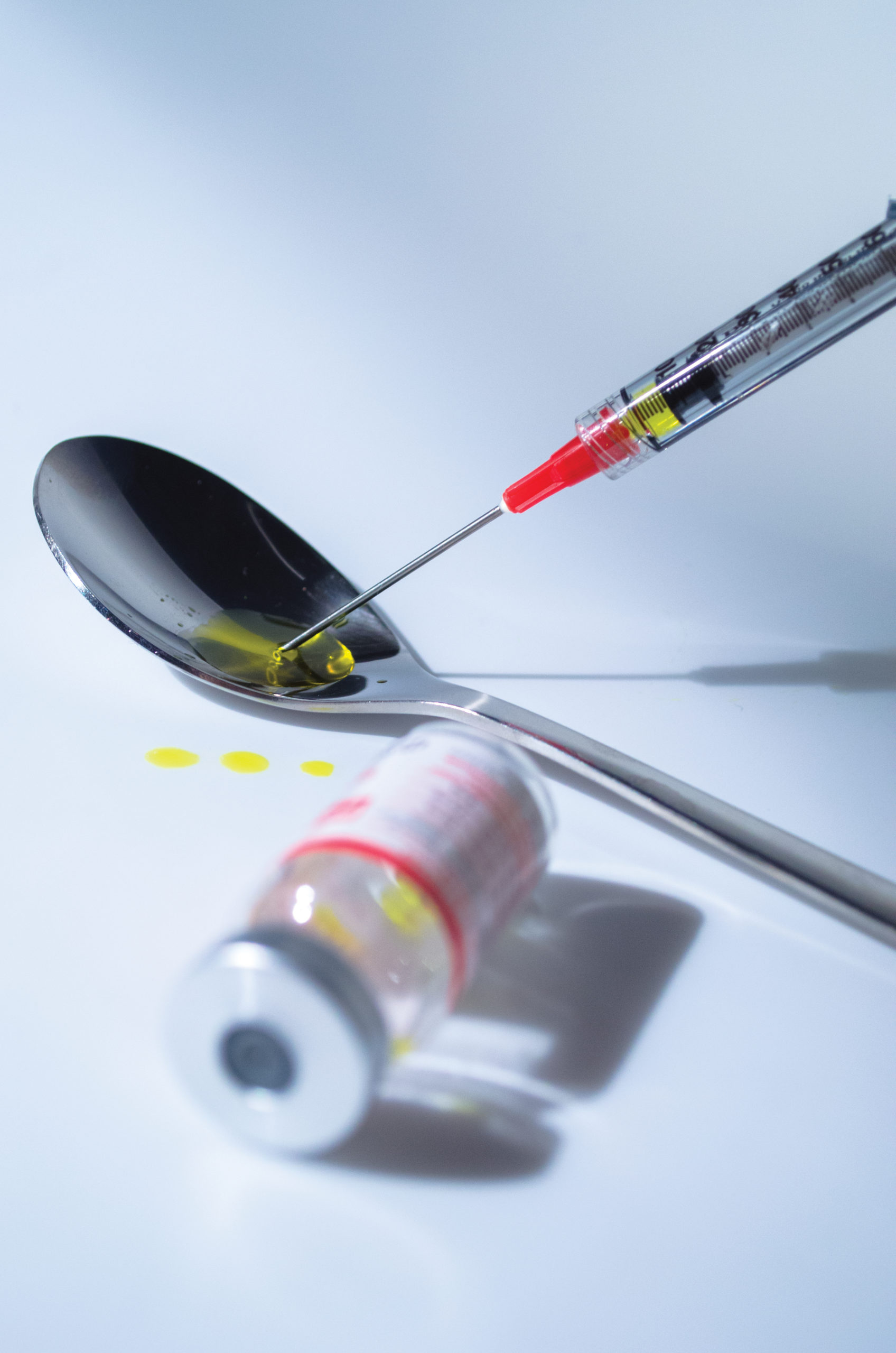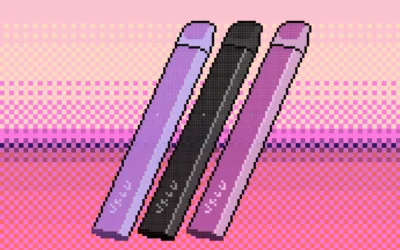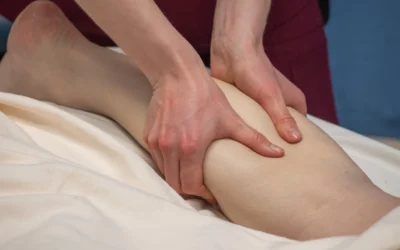It has been a year since two supervised consumption sites opened in Edmonton at Boyle Street Community Services and the George Spady Centre. These two sites were quickly followed by the opening of two more at the Royal Alexandra Hospital and the Boyle McCauley Health Centre. The Edmonton sites were opened along with others around the province as part of the efforts by Alberta Health Services and the Government of Alberta to stem the opioid crisis.
The sites provide users with a sterile environment and supplies, healthcare professionals on site in case of overdose, naloxone kits and training that they can use in the case of an offsite overdose.
They also provide clients the opportunity to meet and get to know Streetworks healthcare professionals as well as other staff who can help support and advocate for their physical and mental health needs, addiction treatment options, as well as help them through the housing process.
Streetworks is a healthcare and needle exchange service in Edmonton that runs out of Boyle Street Community Services, among other locations.
They are one of Edmonton’s greatest proponents of the harm reduction approach to substance use. Their website describes harm reduction as “a practical approach to drug use. It realizes that quitting drugs may not be realistic or desirable for everyone.”
They also explain that the approach is “community based, user-driven, non-judgemental, and broad-based in that it addresses systems which isolate, alienate, and marginalize people.”
Rachel Boyle, 24, is a registered nurse who works at Streetworks. She is one of the nurse educators on their team who also works casually at the supervised consumption site at Boyle Street.
Boyle explains, “Streetworks is a needle exchange, which means we hand out needles and other safe injection equipment to people who inject drugs with the goal to prevent the spread of HIV and Hepatitis C. We have many programs, and the supervised consumption site is one of them.”
She says that in addition to handing out harm reduction supplies, the team also works to connect with the community by building relationships, offering support and education, and discussing referrals and other needs, such as “safe injection practices, requesting a naloxone kit, where to find a meal in the community, where/how to get housed, etc.”
Boyle also believes it is important that “people have an option that is safe, supervised and sterile. The site has reduced overdoses in and around the building of Boyle Street and its surrounding community.”
According to the most recent Alberta Opioid Response Surveillance Report put out by Alberta Health Services and the Government of Alberta on Dec. 11 2018, rates of opioid related deaths in the city continued to rise in the first three quarters since the opening of the safe consumption sites, with 523 deaths related to accidental overdose occurring citywide.
However, the rate at which they are rising has slowed and healthcare providers are hoping this indicates the opioid crisis is plateauing.
The Alberta Opioid Response Surveillance report also breaks the city down into 15 different zones and analyzes them based on the number of accidental opioid-related overdose deaths in each.
Eastwood is the zone in Edmonton with the highest number of opioid-related overdose deaths, followed closely by Woodcroft West, Woodcroft East, and Bonnie Doon.
While Eastwood had the most opioid-related deaths in the city in the first three quarters of 2018, 65 per cent of these deaths occurred outside of this zone. Fentanyl-related deaths occur most frequently, 51 per cent of the time, in the individual’s homes.
The report also found that the only communities in Edmonton with more than five opioid-related deaths were: Boyle Street, Downtown, and Central McDougall.
Safe consumption sites in Edmonton have seen an average of 2,658 visits per month, for a total of 17,339 visits in the first two quarters that they were open.
Between January and September of 2018, there were 208 overdoses across the Edmonton sites. None of these overdoses resulted in a death.
“We are trying to provide wraparound supports to our clients — food bank options, housing options, HIV treatment, family doctors, counselling services, etc.”
— Rachel Boyle
According to Elliot Tanti, communications lead at Boyle Street Community Services, there have been 34,990 total visits by 1,257 unique individuals and 13,416 referrals to other services provided to clients by Boyle Street Community Services, the George Spady Centre, and the Boyle McCauley Health Centre as of Jan. 31, 2019.
“These sites reduce hospitalizations, decrease mortality, decrease HIV and Hepatitis C transmission, and connect people to people, services, and information. These services (referring to Supervised Consumption Sites) are an official health care service from Health Canada that connect clients to care in a non judgmental manner and (focuses) on relationship building while staying safe,” says Boyle.
Boyle says she has also noticed that clients are seeking out “more discussion about treatment and detox surrounding substance use, opioid agonist therapies (methadone, suboxone, and injectable opioid agonist therapies), how to inject drugs safely and the why around it.”
One of the largest concerns voiced by the public since the opening of the safe injection sites in Edmonton regards needle debris and drug paraphernalia in the communities surrounding these sites.
Some residents in nearby neighbourhoods have claimed that they are noticing needles and other objects in their yards and streets more frequently since the opening of the supervised consumption sites.
The largest issue that residents claim to be facing is that there seems to be no consistent answer from the City as to the removal and clean up of used needles and paraphernalia, particularly when it is discarded on private property, such as on someone’s front lawn.
The City of Edmonton website maintains that property owners are responsible for the cleanup of needles on their own private property and that the City will only be picking up needles found in public spaces.
The website advises homeowners to call their nearest medical waste disposal company if they are nervous about collecting and disposing of the paraphernalia on their own.
Some cities that were early adopters of safe injection sites and the harm reduction approach, such as Vancouver, have designed programs to deal with the disposal and removal of used needles and hazardous supplies from both private property and public spaces.
In the event that a Vancouver resident finds a used needle, they have the option of calling the needle pick-up hotline or emailing the used needle collections van.
In response to the concerns about needle debris, Boyle explains, “We don’t want to see needles on the ground either. We do our best to look for needle debris and there are several ways that the needles can be safely disposed of. People can call 311 to get needles picked up.”
However, she also explains that the data simply doesn’t support the claim that there is more needle debris in these communities than before the opening of the supervised consumption sites. In fact, the opposite is true.
“The latest data from the City of Edmonton showed that needles found on the street decreased by 49 per cent between 2017 and 2018, when the services opened,” says Boyle.
It is also important to consider why these sites were placed in neighbourhoods in the first place.
The locations of the safe consumption sites were subject to intense scrutiny prior to their implementation. The goal was to place the sites within neighbourhoods around the city that already showed high volumes of evidence of substance use, and within the existing infrastructures aimed at providing services to substance users.
Rather than building new service centres for the sites, they chose to place the sites within the communities already showing a need for them.
Boyle explains this is part of the strategy of these sites.
“We are trying to provide wraparound supports to our clients — food bank options, housing options, HIV treatment, family doctors, counselling services, etc.”
She also says that by utilizing “different members of the interdisciplinary team,” Streetworks and Boyle Street staff are able to better connect clients “to cultural supports —specifically indigenous cultural supports — and services through the supervised consumption sites.
This also opens up discussion around the way people perceive community, substance use, and substance users.
Boyle believes the pushback against supervised consumption sites “comes from the unknown, fear and stigma. People are afraid of what it will change to Edmonton as a city and potentially to downtown and the Chinatown/inner city community. People are afraid opening these services can cause the effect of more people using drugs and/or injecting drugs.”
“The data that is collected from the supervised consumption sites can help support and change the attitudes of Edmontonians. The data can prove and support that the services work and the good they do for people who are amongst the most marginalized in society,” says Boyle.
Supervised consumption sites and the approach they take to substance use challenges this perspective and aims to change the stigma within communities. The Streetworks website explains that harm reduction is a community based approach and “recognizes drug users as part of a larger community.
Protecting and improving the health of the community as a whole therefore requires protecting and improving the health of drug users. Drug users must be integrated into the community rather than isolated from it.”
Photography by Milo Knauer.





0 Comments